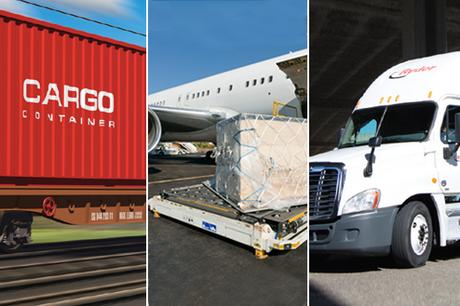 From new regulations, to the ongoing driver shortage, to new rail provider investments and changes in policy, today’s shippers, trucking carriers and the logistics industry face a host of challenges expected to affect intermodal transportation.
From new regulations, to the ongoing driver shortage, to new rail provider investments and changes in policy, today’s shippers, trucking carriers and the logistics industry face a host of challenges expected to affect intermodal transportation.
Moreover, these expected realities, along with railroads’ reductions in coal and petroleum and increases in agricultural loads, as well as the resurgent economy, could strain capacity. Shippers must begin planning now for the changes ahead.
That’s the takeaway from a recent industry summit – and the likely message for another expo to be held this fall. They presage changes the Federal Motor Carrier Safety Administration is expected to announce later this year regarding the timetable for its requirement that truck drivers switch from paper to electronic logs.
To prepare, railroads and intermodal providers are investing heavily in new facilities and rail lines to help accommodate an anticipated surge in traffic. Among the observations from the BNSF Railway 2015 Supply Chain Summit held this June are:
Railroads are investing in facilities. BNSF is pumping some $6 billion into infrastructure, facilities and personnel to improve systems, capacity and service. As a whole, Class 1 railroads are forecast to commit $29 billion in new investment, up from $27 billion in 2014, event speakers noted. Railroads are investing in double tracking as many routes as possible to streamline passage, improve transit times and enhance consistency.
The rules of rail are changing. BNSF also announced it will reduce free time in select locations starting around August from 48 to 24 hours. Though the details were vague, their effort to increase velocity in the yard will mean shippers and beneficial cargo owners (BCOs) will have to move containers in a day or less, even those that arrive on Fridays or weekends. Industry watchers expect this to become a trend.
Consistency is critical. While some in the industry laud the efforts to speed up intermodal and railroad transport as they compete with trucks, many seek scheduling consistency. As shippers set up ordering patterns, they seek intermodal deliveries that will adhere more closely to published schedules. The message likely will be similar at the Intermodal Association of North America’s (IANA) Intermodal EXPO scheduled for September. As peak season approaches, how the intermodal supply chain affects industry providers like 3PLs, motor carriers, railroads, drayage companies and leasing companies will impact delivery of consistent service and reduce dwell time and free time at destinations.
Be ready to act – and stay the course. As the intermodal industry answers calls for faster, more consistent transit, customers must be ready to act. 3PLs are working with customers to help prepare for changing shipping patterns and timetables. Change shouldn’t discourage use of intermodal. Many 3PLs, including Ryder, will continue to drive business to intermodal. But anticipated changes should serve as a call for advanced preparation.
See vendors as partners. Shippers and BCOs should confer regularly at the C-level with railroads and intermodal providers to encourage frequent and transparent communications in pursuit of how changes will impact the shippers. Shippers should review lanes proactively to spot opportunities for improvement. In an industry built on strategic relationships, look to transportation providers not as vendors but as partners. Whether facing new regulations, driver shortages or other challenges to capacity, those shippers and BCOs who become “shippers of choice” for rail and intermodal providers will be better prepared to weather shortages amid the changing realities ahead.
Change is coming down the tracks. How shippers, trucking carriers and the logistics industry respond to new regulations, driver shortages and new rail policies could determine success through 2015 – and beyond.
Authored by Clint Larson
Clint Larson, Truckload Modal Manager at Ryder System Inc., has worked in transportation management for over eight years, with the last three focused on carrier compliance and procurement. He currently heads up the strategic sourcing of truckload and intermodal providers for Ryder’s Transportation Management customers.

